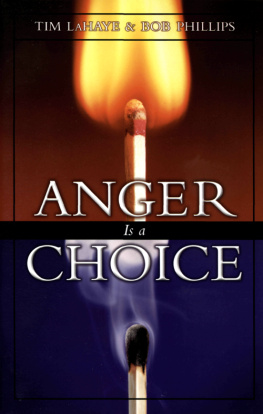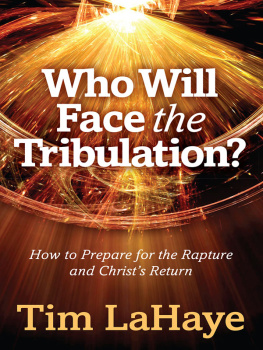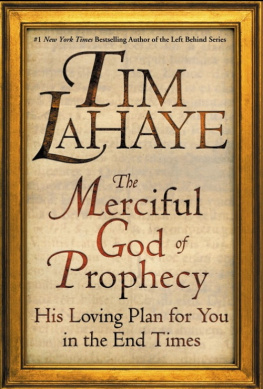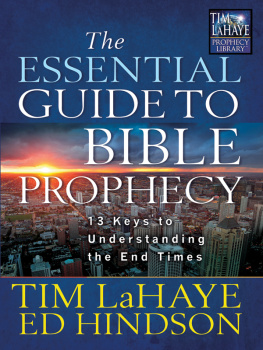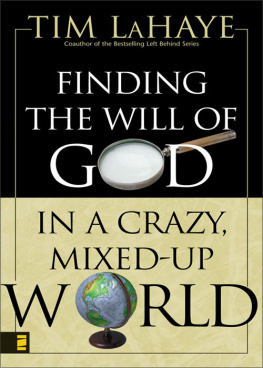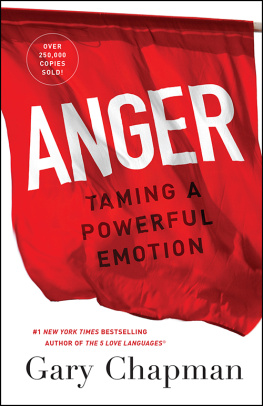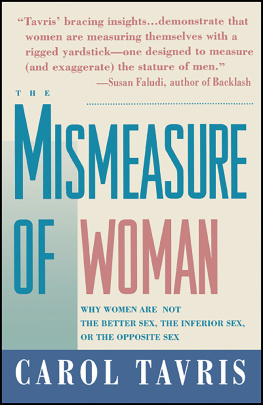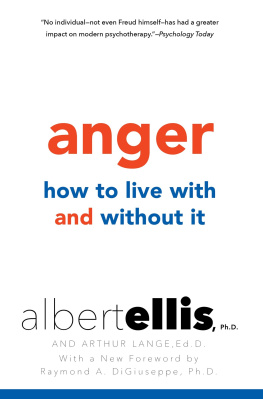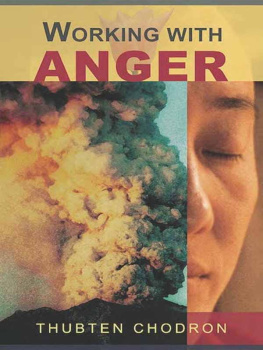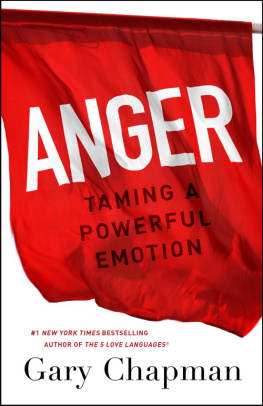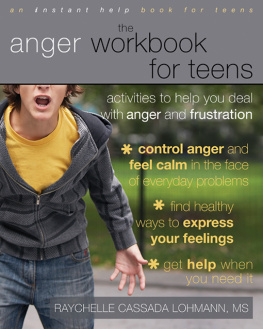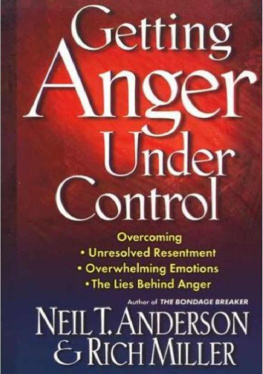ZONDERVAN
Anger Is a Choice
Copyright 1982 by Zondervan, 2002 by Christian Family Life and Bob Phillips
All rights reserved under International and Pan-American Copyright Conventions. By payment of the required fees, you have been granted the non-exclusive, non-transferable right to access and read the text of this e-book on-screen. No part of this text may be reproduced, transmitted, downloaded, decompiled, reverse engineered, or stored in or introduced into any information storage and retrieval system, in any form or by any means, whether electronic or mechanical, now known or hereinafter invented, without the express written permission of Zondervan.
EPub Edition APRIL 2010 ISBN: 978-0-310-87134-7
Requests for information should be addressed to:
Zondervan, Grand Rapids, Michigan 49530
Library of Congress Cataloging-in-Publication Data
LaHaye, Tim F.
Anger is a choice / Tim LaHaye and Bob Phillips
p. cm.
Originally published: c1982.
Includes bibliographical references and indexes.
ISBN 0-310-24283-5 (softcover)
1. AngerPsychological aspects. 2. AngerMoral and ethical aspects. I. Phillips,
Bob, 1940- II. Title.
BF575.A5 L33 2001
152.47-de 21
2001043525
All Scripture quotations, unless otherwise indicated, are taken from the Holy Bible, New International Version. NIV. Copyright 1973, 1978, 1984 by International Bible Society. Used by permission of Zondervan. All rights reserved.
Scripture references marked LB are from the Living Bible, copyright 1971. Used by permission of Tyndale House Publishers, Inc., Wheaton, Illinois 60189. All rights reserved.
Published in association with the literary agency of Alive Communications, Inc., 7680 Goddard Street, Suite 200, Colorado Springs, CO 80920.
04 05 06 07 08
A re you an angry person? Then join the club! So are we. We both have struggled with anger in the past. You mean you dont struggle with it now? you ask.
We would like to be able to answer that by saying we no longer have to face our anger. We would like to tell you that we have found the golden key that eliminates hostility. And that if you will follow certain techniques, you will no longer have to deal with anger. But if we did this, we would be lyingor at the least, be very misleading.
No, we are human like you. Thats not an excuse; that is a fact. The fact that we are human is what makes dealing with the emotion of anger so difficult. You notice, we said dealing with anger, not eliminating anger.
We believe that all our emotions have been given to us by God. It is easy for us to accept emotions such as joy, peace, tender-ness, and confidence as being God-given. It is harder to believe that God has given us the emotions of fear or anger. But He has.
You may not realize it, but fear, anger, and depression are among your best friends. Youre crazy! you reply. You guys have been in the counseling room too long. True, we have done a lot of counseling, but we dont think we are crazy.
Lets try to explain it this way. Imagine that we go to our friends new house for a visit. They are giving us a tour, and we come to the kitchen. As we look around at the beautiful new kitchen, we notice there apparently is no stove. The only thing we see that might be a stove is two white porcelain rectangles on the counterit turns out to be one of those new stoves with the burners under the glass.
We have never seen a stove like this. We do not realize that the burners have been on, because the top of the stove looks clean and white. We walk over, say, Whats this? and place the palm of a hand on the surface of the glass. What is the first thing we feel? Stupid, you say. Well, thats probably true, but more likely we feel the pain of a hand burning.
Now let us ask, Is the pain we first feel a friend or an enemy? At first it is a friend. It tells us to remove the hand from the hot burner. If, however, we leave the hand on the burner, our pain becomes our first-, second-, and third-degree enemy.
Our emotions are similar to the physical pain we sometimes experience. The painful emotions of fear, anger, and depression are our friendsat first. They can become our first-, second-, and third-degree emotional enemies if we dont listen to them.
When we feel physical pain, we have a choice. We can choose to let the hand burn, or we can choose to remove the hand from the danger. The same is true of our emotions. We have a choice. We can choose to ignore them and experience great emotional pain, or we can choose to listen to them and experience health and healing.
This book is about listening to the emotion of anger. It is not a book that tells you to ignore your anger or that says your anger can be eliminated. It is a book that will, hopefully and prayerfully, help you to
- understand what anger is.
- understand where anger comes from.
- know how to recognize anger in its many disguises.
- learn how to make choices of what to do with your anger.
- gain insight in how to help others learn to deal with their anger.
We realize that the study of the complex emotion of anger is not an easy matter. Weve attempted the difficult task of wedding simplicity with professionalism. If weve leaned in any direction, it is toward simplicity. Our purpose is to help as many as possible with this most important emotion.
This book is designed with several goals in mind:
To help you as an individual make choices about your anger
To be used as a study guide for Bible classes, home study, or small group study
To be a resource manual for pastors, counselors, and teachers
It is our prayer that God will use this book to help all of us face, understand, and make positive, godly choices about what to do with anger.
TIM LAHAYE AND BOB PHILLIPS
NOTE OF CLARIFICATION ABOUT WRITING STYLE
Writing is like wrestling alligatorsits an exciting and difficult task. Gene Fowler suggests that writing is easy: All you do is stare at a blank sheet of paper until drops of blood form on your forehead. Red Smith joins in by stating, Theres nothing to writing. All you do is sit down at a typewriter and open a vein. When it comes to two people authoring a book, Evelyn Waugh makes the humorous observation, Two or more people getting together to write something is like three people getting together to make a baby.
The writing of Anger Is a Choice was a joint effort by two friends, both of whom have been ministers, counselors, and authors of many books. We could have chosen to approach the book in a number of different ways: We could have chosen to write it in the third person, thus keeping our personalities out of the material and the illustrations general. We could have chosen to split up the content, with Tim writing certain chapters and Bob writing other chapters. We could have chosen to write most of the material in the third person and occasionally identify certain portions by stating, This is Tim speaking, or This is Bob speaking.
For the most part, we decided to write the illustrations in the first person and much of the text in third person. We chose this method because the illustrations actually happened to either Tim or Bob. By changing the names of the people in the illustrations and not identifying who was speaking, we have kept the power of the event while protecting the confidentiality of the individuals and the counselors. We felt that a first-person account of a real-life event would be a more powerful form of presentation. It was our hope that this style of writing would keep the flow of thought running smoothly and that the reader would sense the reality of true-life events. If you as the reader would be more comfortable seeing either Tim or Bob as the author alone, men proceed with that concept in mind. We both are in agreement with the thoughts presented and would speak with a unified mind.

